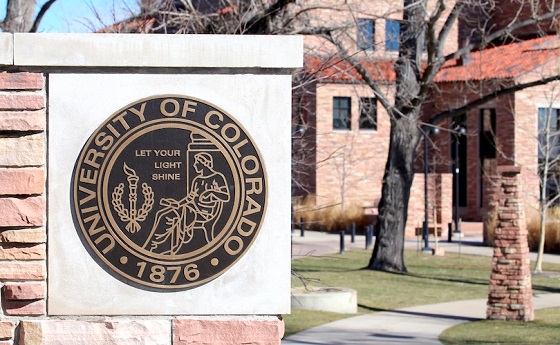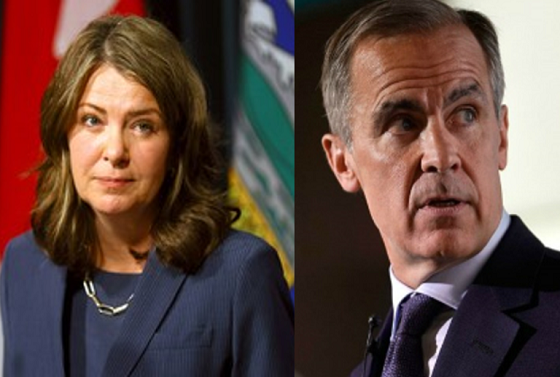City of Red Deer
The rich and sobering history of Red Deer’s “Unknown Soldier”


The origins of Red Deer’s beautiful Cenotaph date back to the end of WWI. The statue of the Unknown Soldier is a provincial historic site. In this article, historian and author Michael Dawe helps us understand the rich history of this monument and reminds us all of the sacrifices of our forebearers. Enjoy the photo gallery showing the changes to the Cenotaph and its surroundings over the years.
The Cenotaph by Michael Dawe (originally published Nov. 9, 2019)
There are many memorials around the City of Red Deer to honour those who served and those who lost their lives during a time of war. The main community memorial is the Cenotaph, the statue of the Unknown Soldier that stands in the centre of Ross Street in the heart of downtown Red Deer.
- Cenotaph 1930’s Red Deer Archives P2949
- Cenotaph and boulevard looking east 1922, Red Deer Archives
- Cenotaph 1927 Red Deer Archives N268
- Cenotaph 1943 Red Deer Archives S2282
- Cenotaph c. 1947 Red Deer Archives P2832
- Cenotaph h 1930’s P2949
- Honour Guard at the unveiling of the Cenotaph, September 15, 1922, Red Deer Archives P2700
- Unveiling of Cenotaph, September 15, 1922, Red Deer Archives P2700
- Unknown Soldier Statue before installation, 1922 Red Deer Archives P2759
- Cenotaph 1960s Waskasoo Camera Club
- Cenotaph, 1983 Red Deer Archives S480
- Cenotaph 2001, City of Red Deer
- Cenotaph, 1954 N5939
- Cenotaph 1954 N3596
- Cenotaph Ceremonies 2014 Frank Wong
- Cenotaph c. 1950 Waskasoo Camera Club
- Cenotaph 1948 Waskasoo Camera Club
- Cenotaph c. 1950 Red Deer Archives P3280
- Unknown Soldier 2016 c. Lloyd Lewis
- Veterans Park and Unknown Soldier 2016 c. Lloyd Lewis
The origins of the Cenotaph go back to the end of the First World War. That conflict had been a searing experience for Red Deer. 850 young men and women from the City and surrounding districts had enlisted. Of these, 118 lost their lives. Of those who returned, many had suffered terrible wounds and faced a lifetime of ill health and suffering. Hence, it was extremely important to the community that a fitting and very special memorial be created.
On December 18, 1918, five weeks after the end of the War, the Central Alberta local of the Great War Veterans Association (forerunner of the Royal Canadian Legion) organized a large public meeting to discuss the creation of such a memorial. Three proposals were initially made. The first was to construct a pyramidal monument of river cobblestones in the centre of the City. The second was to construct a community hall and recreation facility next to City Hall. The third was to purchase the old Alexandra (Park) Hotel and turn it into a community centre.
After considerable discussion, a fourth proposal was adopted. It was decided to build a monument rather than a community centre. However, at the suggestion of Lochlan MacLean, it was also decided that this monument be in the form of a statue of a soldier, mounted on a pedestal, rather than a cobblestone pyramid or obelisk.
Major Frank Norbury, an architectural sculptor at the University of Alberta and a veteran of the War, was commissioned to carve the statue. He came up with the concept of carving the Unknown Soldier as he was coming off active duty on the front line. He was to face west, toward home and peace. He was also to be positioned towards the C.P.R. station from which most of the soldiers had left Red Deer for the War.
This latter point was one of the greatest controversies about the Cenotaph. City Council and a few others wanted it in the centre of the City Square (now City Hall Park). However, the majority wanted it facing directly towards the station and in the middle of Ross Street, Red Deer’s busiest thoroughfare, so that it would be a constant reminder of the sacrifices of the War.
Meanwhile, fundraising for the project commenced, but proved quite a challenge. Post-war Red Deer faced one of the worst economic depressions in its history. However, despite the general shortage of money, by the following summer more than half of the $6200 needed had been raised. Unfortunately, Red Deer City Council decided that given its financial situation, it could not contribute any money to the project. This decision reinforced the opinion of the Memorial Committee that Council’s wish to have the Cenotaph in the middle of the City Square should be ignored.
There were still a lot of hard feelings about that lack of official City participation. Eventually, City Council agreed to build a boulevard in the middle of Ross Street, west of 49 Avenue, as a site for the Cenotaph. A decision was also made to place street lights at either end of that boulevard to provide nighttime illumination of the spot.
There was another debate regarding the proper means of recording the names of those killed in the War. Some wanted tablets placed on the pedestal. However, the Memorial Committee was worried about having a complete and accurate list. Finally, it was agreed to have two scrolls prepared, one with the names of those who had served and one with the names of those who had lost their lives. Both scrolls were put into a copper tube and placed in a cavity in the pedestal.
On September 15, 1922, the Cenotaph was officially unveiled. To the delight of the community, Governor General Lord Byng of Vimy agreed to come and do the honours. Lord Byng was a hero of one of Canada’s most significant military victories, the Battle of Vimy Ridge. Vimy was also a victory that had also come with very heavy loss of life, both locally and nationally.
At the time of the official unveiling, it was reported that the Cenotaph was the first sculpture war memorial in Alberta. Once the official dedication was completed, the monument was placed into trust with the City on behalf of those who had contributed to its creation.
The Cenotaph was rededicated in 1949 to include remembrance of those who served and lost their lives in the Second World War. A plaque signifying that designation was added to the pedestal. After the completion of the new City Hall Park and the Memorial Centre in the early 1950’s. there was a push to relocate the Cenotaph from its location on Ross Street to either the centre of City Hall Park or a new site in front of the Memorial Centre. However, a plebiscite was held in 1953 in which the citizens of Red Deer voted to keep the Cenotaph were it was.
Another plaque was added in 1988 in memory of those who served and died in the Korean Conflict. At the same time, through the efforts of some dedicated members of the public, special lighting was added to ensure that the Cenotaph was highly visible at night.
There were new proposals in the 1990’s to relocate the Cenotaph to City Hall Park. However, Charlie Mac Lean, son of Lochlan MacLean and one of the last surviving people to have actually built the Cenotaph, offered the opinion that he did not think that the monument could be safely relocated.
In 2006, the Cenotaph was extensively cleaned and repaired. City Council then successfully applied to have the Cenotaph designated as a Provincial Historic Site. In 2010-2011, a beautiful Veterans’ Park was created around the Cenotaph, to enhance it and to make it more accessible to the public. Moreover, eight interpretive panels were created to let people know the full significance of Red Deer’s official war memorial. They give the stories of those who served in the Boer War, First World War, Second World War, Korean Conflict, the Afghanistan War and all the peace-keeping and peace-making missions in which Canadians have been involved.
Lest We Forget.
Michael Dawe
Here are some other local history stories you might enjoy
Armistice Day 11/11/1918 from a Red Deer perspective in pictures and story
City of Red Deer
Cindy Jefferies is Mayor. Tristin Brisbois, Cassandra Curtis, Jaelene Tweedle, and Adam Goodwin new Councillors – 2025 Red Deer General Election Results

Showing official results for: Mayor of The City of Red Deer
| # | Candidate Name | Votes | Percentage |
|---|---|---|---|
| 1 | JEFFERIES, Cindy | 6237 | 41% |
| 2 | SCOTT, Gareth | 3483 | 23% |
| 3 | DOERKSEN, Victor | 3143 | 20% |
| 4 | LEE, Lawrence | 2215 | 14% |
| 5 | GALLAGHER, John | 298 | 2% |
| Rejected Ballots | 0 | 0% |
Showing official results for: Councillor of The City of Red Deer
| # | Candidate Name | Votes | Percentage |
|---|---|---|---|
| 1 | BRISBOIS, Tristin | 6703 | 7% |
| 2 | CURTIS, Cassandra | 6422 | 7% |
| 3 | KRAHN, Chad | 6249 | 7% |
| 4 | BARNSTABLE, Kraymer | 6235 | 7% |
| 5 | WYNTJES, Dianne | 6069 | 7% |
| 6 | TWEEDLE, Jaelene | 5635 | 6% |
| 7 | GOODWIN, Adam | 5290 | 6% |
| 8 | BURUMA, Bruce | 5241 | 6% |
| 9 | GOULET-JONES, Calvin | 5050 | 5% |
| 10 | HUIZING, Hans | 4810 | 5% |
| 11 | BOUCHARD, Brandon | 4528 | 5% |
| 12 | MACDONALD, Ashley Jason | 3832 | 4% |
| 13 | BUCHANAN, Buck | 3660 | 4% |
| 14 | MOHAMOUD, Zainab | 3478 | 4% |
| 15 | SYPKES, Thomas | 3459 | 4% |
| 16 | BECK, Gabriel | 3370 | 4% |
| 17 | PARKS, Gail | 2809 | 3% |
| 18 | YZERMAN, Calvin | 2265 | 2% |
| 19 | WILE, Haley | 1986 | 2% |
| 20 | COMÉTE, Christian | 1843 | 2% |
| 21 | KLERKS, Kevin M. | 1699 | 2% |
| 22 | ROBINSON, Don | 1296 | 1% |
| 23 | MARTIN, Greg | 656 | 1% |
| 24 | KLYWAK, Anthony | 444 | 0% |
| Rejected Ballots | 0 | 0% |
Showing official results for: Trustee of the Red Deer Public School Division
| # | Candidate Name | Votes | Percentage |
|---|---|---|---|
| 1 | SOMMERS, Angela | 3320 | 9% |
| 2 | BUCHANAN, Nicole | 3180 | 9% |
| 3 | MACAULAY, Dianne | 3119 | 8% |
| 4 | WATTERS, Jim | 3038 | 8% |
| 5 | BAIRD SMITH, Emilee | 2753 | 7% |
| 6 | DAVIES, Nathan | 2749 | 7% |
| 7 | DALSTRA, Jason | 2722 | 7% |
| 8 | CHRISTENSEN, Sheri | 2701 | 7% |
| 9 | PARKER, Jenessa | 2581 | 7% |
| 10 | PEACOCKE, Cathy | 2573 | 7% |
| 11 | WILLIAMS, Danielle | 2342 | 6% |
| 12 | ODISHAW, Shelley Lynn | 2187 | 6% |
| 13 | SYMONS, Jessica | 1881 | 5 |
Trustee of the Red Deer Catholic Separate School Division, Red Deer Area Ward
| # | Candidate Name | Votes | Percentage |
|---|---|---|---|
| 1 | ANDREW, Chris | 2020 | 14% |
| 2 | MACDONALD, Brenda | 1354 | 10% |
| 3 | REED, Martin (Marty) | 1082 | 8% |
| 4 | LEYSON, Cynthia | 1050 | 8% |
| 5 | HUBER, Emily | 1037 | 7% |
| 6 | HOLLMAN, Murray | 1036 | 7% |
| 7 | DONOVAN, Matthew | 1021 | 7% |
| 8 | GROENEN, John | 974 | 7% |
| 9 | STEEVES, Rod | 921 | 7% |
| 10 | PASULA, Kim | 911 | 7% |
| 11 | BECK, Gabriel | 825 | 6% |
| 12 | HUNTER, Ashley | 811 | 6% |
City of Red Deer
Plan Ahead: Voting May Take a Little Longer This Election Day
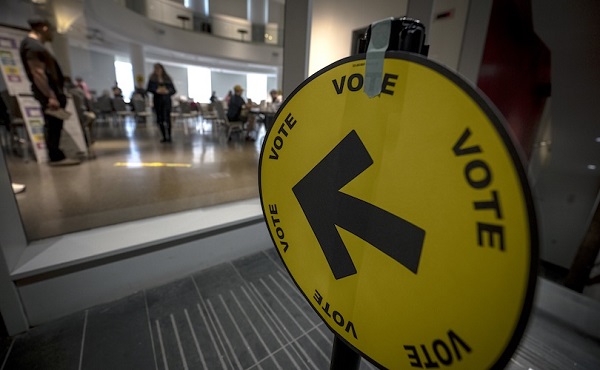
News release from the City of Red Deer
Voters are encouraged to plan their vote and allow a little extra time at the polls this Election Day, Monday, October 20.
Because this year’s election uses Alberta’s new Permanent Elector Registry, voting may take slightly longer than in previous years. Municipalities are required to provide updated voter information back to the province after the election. As a result, many voters will be asked to complete an Elector Register Form (Form 13) at the voting station — even if they are already registered to vote. This ensures that voter information is accurate and up to date. Once the registry information has been updated, all forms are securely shredded.
Additionally, the Permanent Elector Registry is not shared with local school boards, so anyone voting for a School Board Trustee must also complete an Elector Register Form (Form 13).
We appreciate voters’ patience as our election teams work to ensure every eligible voter can cast their ballot accurately and securely. Once the voting process begins, most voters complete their vote in about 10 minutes.
To help avoid lineups, voters can visit Red Deer Elections website to check real-time wait times at each voting station and choose the location with the shortest line.
Anyone who arrives at a polling station and joins a line before 8 p.m. will be able to vote.
Thank you for your understanding and for taking the time to make your voice heard in Red Deer’s 2025 Municipal and School Board Election.
-

 Automotive2 days ago
Automotive2 days agoThe $50 Billion Question: EVs Never Delivered What Ottawa Promised
-

 Local Business1 day ago
Local Business1 day agoRed Deer Downtown Business Association to Wind Down Operations
-
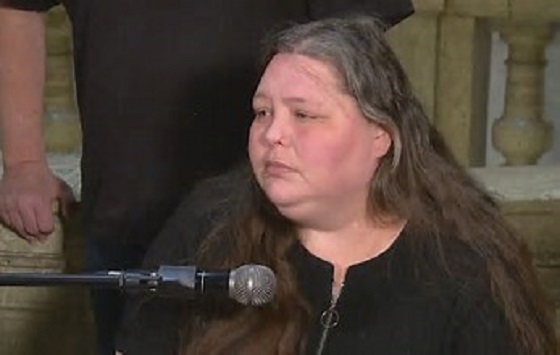
 International1 day ago
International1 day agoTrump admin wants to help Canadian woman rethink euthanasia, Glenn Beck says
-

 C2C Journal2 days ago
C2C Journal2 days agoWisdom of Our Elders: The Contempt for Memory in Canadian Indigenous Policy
-

 Alberta1 day ago
Alberta1 day agoAlberta introducing three “all-season resort areas” to provide more summer activities in Alberta’s mountain parks
-

 Agriculture1 day ago
Agriculture1 day agoGrowing Alberta’s fresh food future
-
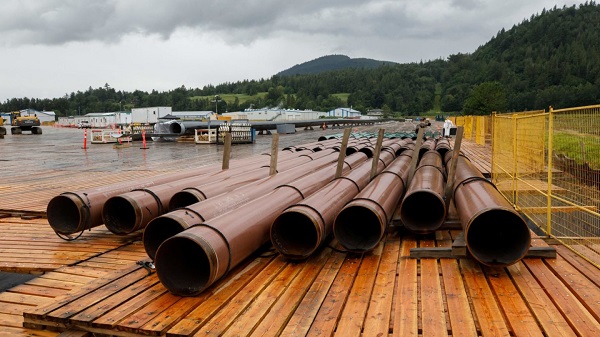
 Alberta1 day ago
Alberta1 day agoThe case for expanding Canada’s energy exports
-
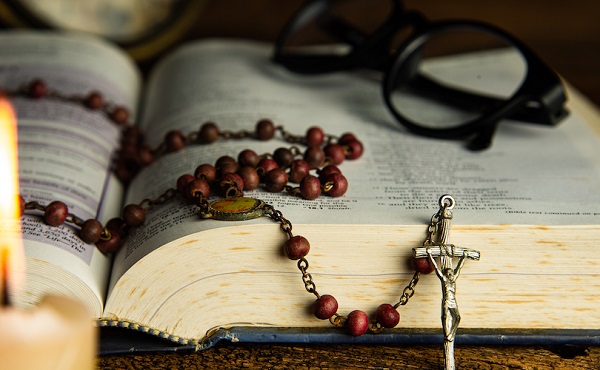
 Censorship Industrial Complex2 days ago
Censorship Industrial Complex2 days agoConservative MP calls on religious leaders to oppose Liberal plan to criminalize quoting Scripture














































